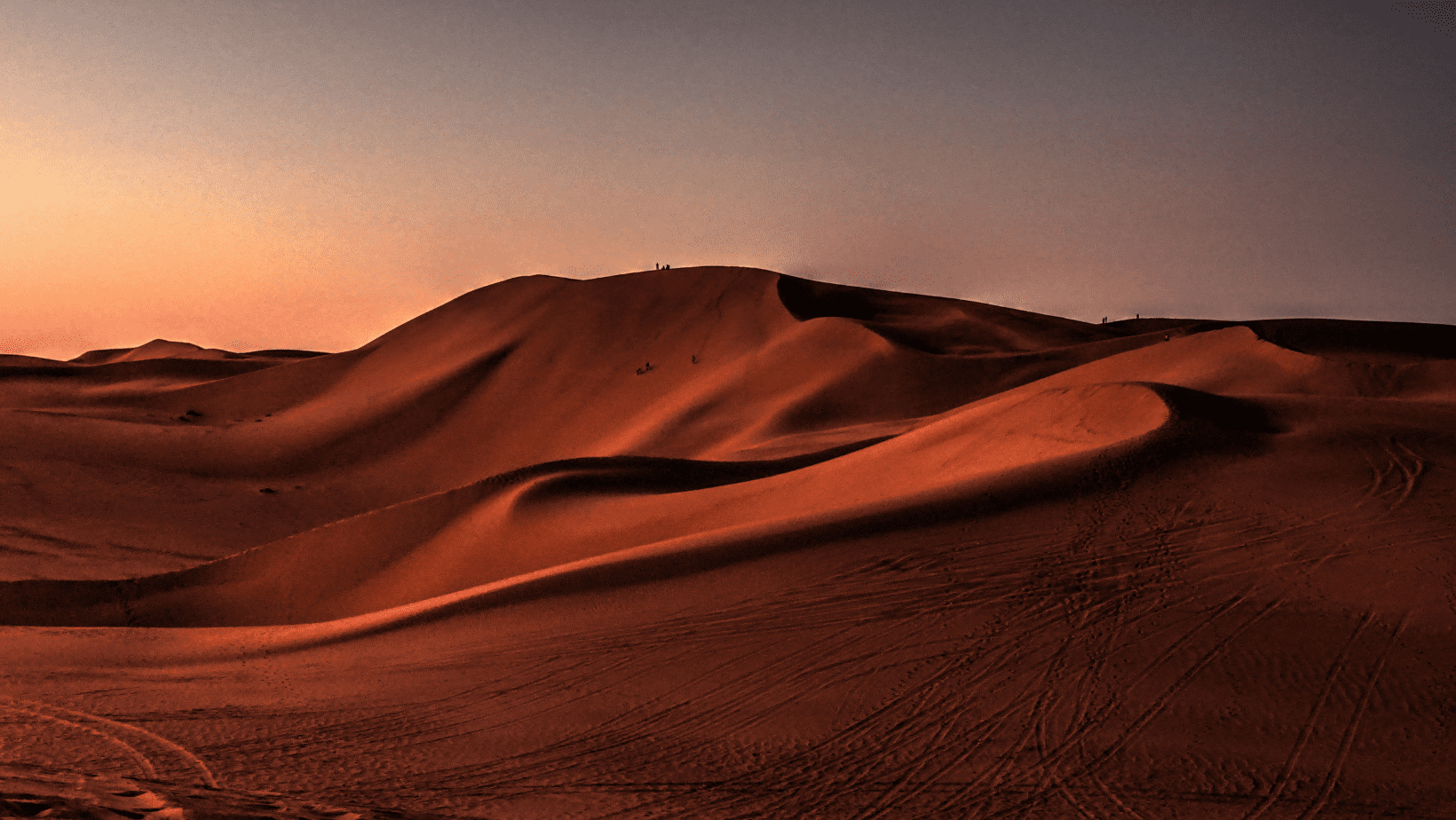
What to see in Algeria
Algeria is a land still waiting to be explored and virtually untouched by tourism. Beyond the sand dunes and bustling souks lies a land of intrigue, where the echoes of ancient empires still reverberate. Come, wander among the kasbahs and listen to the whispers of history – for in Algeria, secrets long buried may yet be uncovered.

Djemila
The archaeological site of Djemila is located in northern Algeria, approximately 900 meters above sea level, and covers an area of about 70 hectares. It was founded in the first century AD by the Romans as a military settlement to control the region and protect the nearby Roman road from military threats. The city developed into a major center of trade, agriculture, and craftsmanship, and it became a significant cultural and religious center for the indigenous Berber population. The site contains numerous well-preserved structures, including temples, basilicas, theaters, baths, and houses, reflecting the different periods of the city’s history.
One of the most impressive features of Djemila is the Roman theater, which could seat up to 3,000 spectators and is still used for cultural events today. The theater is built into the slope of a hill and has a breathtaking view of the surrounding mountains. Another notable feature is the Arch of Caracalla, built in honor of the Roman emperor who visited the city in the third century AD. Djemila was recognized as a UNESCO World Heritage Site in 1982, and it continues to attract visitors from around the world who are fascinated by its rich history and well-preserved ancient structures.
The Tomb of the Christians
The ‘Tomb of the Christians’ is a Christian Mausoleum located near the coastal town of Tipaza, which was an ancient Roman colony in present-day Algeria. It is believed to have been built in the late 3rd century AD as a burial place for a the Berber Numidian King Juba II and Queen Cleopatra Selene (daughter of Cleopatra of Egypt). The mausoleum features a circular plan and is topped by a dome, with a central chamber containing three sarcophagi made of marble. The sarcophagi are intricately decorated with Christian symbols and scenes, including the Good Shepherd and the raising of Lazarus.
The ‘Tomb of the Christians’ which is also known as the ‘Royal Mausoleum of Mauretania’ is considered an exceptional example of early Christian art and architecture in North Africa, reflecting the fusion of Roman and Christian styles. It is also a testament to the presence of Christianity in the region during the Roman period. The site is open to visitors and provides a unique glimpse into the rich cultural heritage of Algeria.
To learn more about the ‘Tomb of the Christians’ why not read our blog HERE.
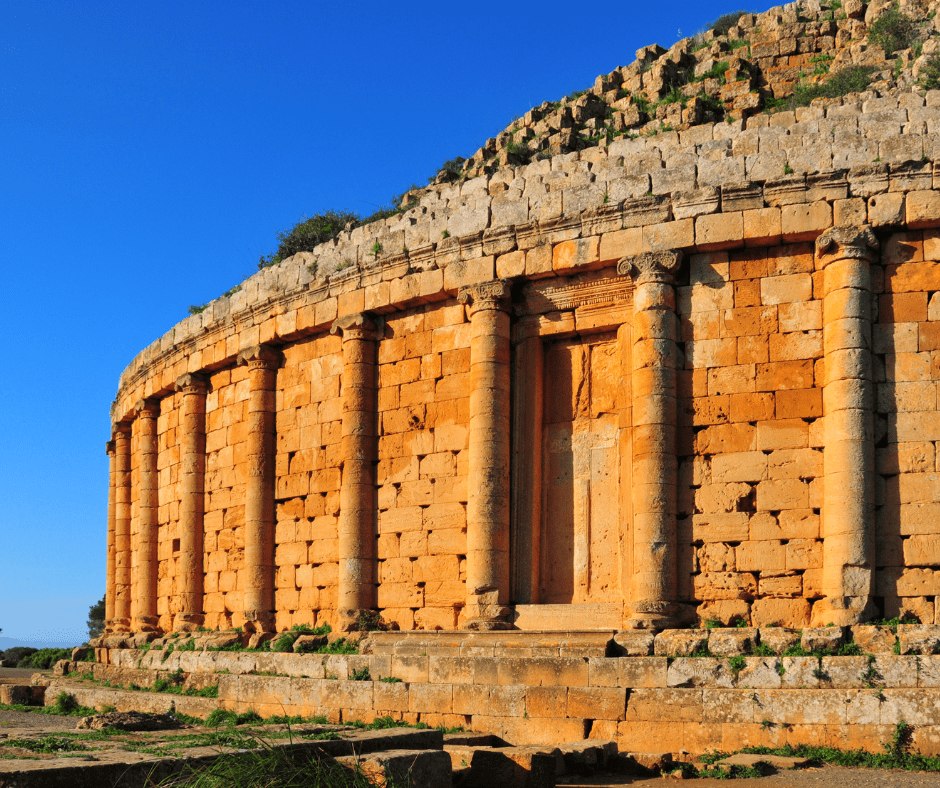
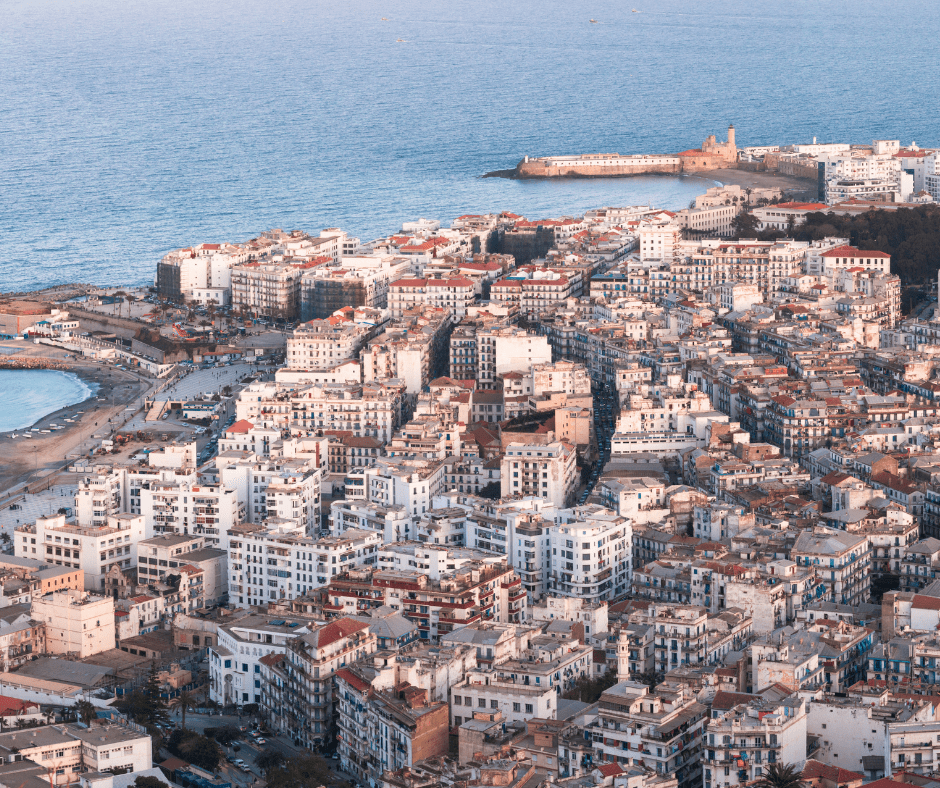
Algiers
Algiers is a city with a rich history and cultural heritage that offers a unique and authentic travel experience. The city’s architecture reflects the influence of its varied past, from Ottoman palaces to French colonial buildings. The Casbah, a UNESCO World Heritage site, is a maze of narrow streets and alleyways that lead to charming courtyards and beautiful mosques. The Jardin d’Essai du Hamma, a botanical garden dating back to the French colonial era, offers a peaceful retreat from the hustle and bustle of the city. The city’s museums and galleries showcase the country’s art and history, from the National Museum of Fine Arts to the Bardo Museum. The food scene is also a highlight, with a range of delicious Algerian dishes to try, from couscous and tagine to fresh seafood.
Aside from its history and culture, Algiers also boasts beautiful beaches and stunning coastal views. The Bay of Algiers offers picturesque scenery, with the city’s white buildings cascading down the hills towards the sea. The beaches of Sidi Fredj and Zeralda are popular spots for swimming and sunbathing, while the La Madrague yacht harbor offers a glimpse into the city’s maritime culture. For outdoor enthusiasts, the Djurdjura National Park is a short drive from Algiers and offers breathtaking mountain scenery and hiking opportunities. Algiers is a city that offers a unique and authentic travel experience, with a mix of history, culture, and natural beauty that is sure to impress any visitor.
Timgad
Timgad, located in the Aures Mountains in Algeria, is arguably Algeria’s greatest sight. It was founded by Emperor Trajan in AD 100 as a military colony and served as a strategic outpost in the Roman Empire’s campaigns against the Berber tribes of the region. Timgad’s urban layout was based on the standard Roman city plan, with a cardo and decumanus intersecting at the centre of the city, dividing it into four sections. The city’s public buildings and monuments, including a theatre, a library, a basilica, and a triumphal arch, were constructed with locally quarried stone and decorated with intricate carvings and reliefs. Timgad thrived during the second and third centuries AD and became an important centre of trade and commerce in the region, with a diverse population of Romans, Berbers, and other peoples.
Despite its relative isolation, Timgad’s impressive architecture and engineering have ensured that it has survived to the present day. The city was abandoned in the 7th century AD and was rediscovered and excavated in the early 20th century. Today, Timgad is a UNESCO World Heritage Site and attracts visitors from around the world who come to admire its well-preserved Roman ruins and learn about the city’s rich history and cultural heritage. The site’s significance as a well-preserved example of a Roman colonial city has helped scholars gain insights into the daily life and culture of the Roman Empire’s provincial subjects, as well as the political and economic structures that sustained its vast empire.
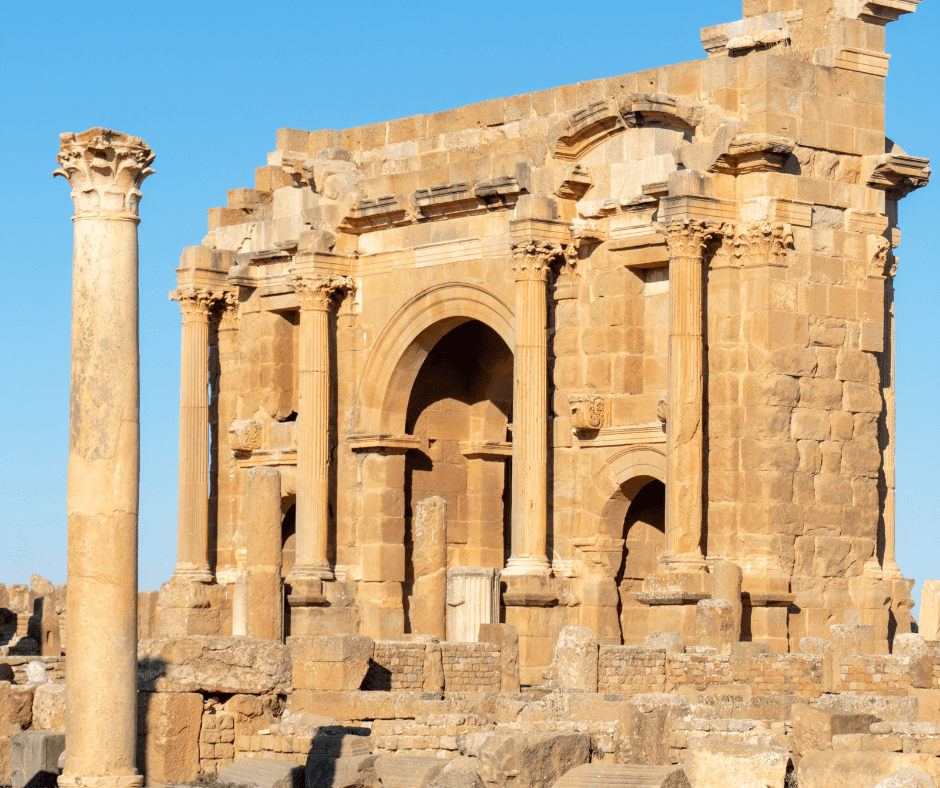

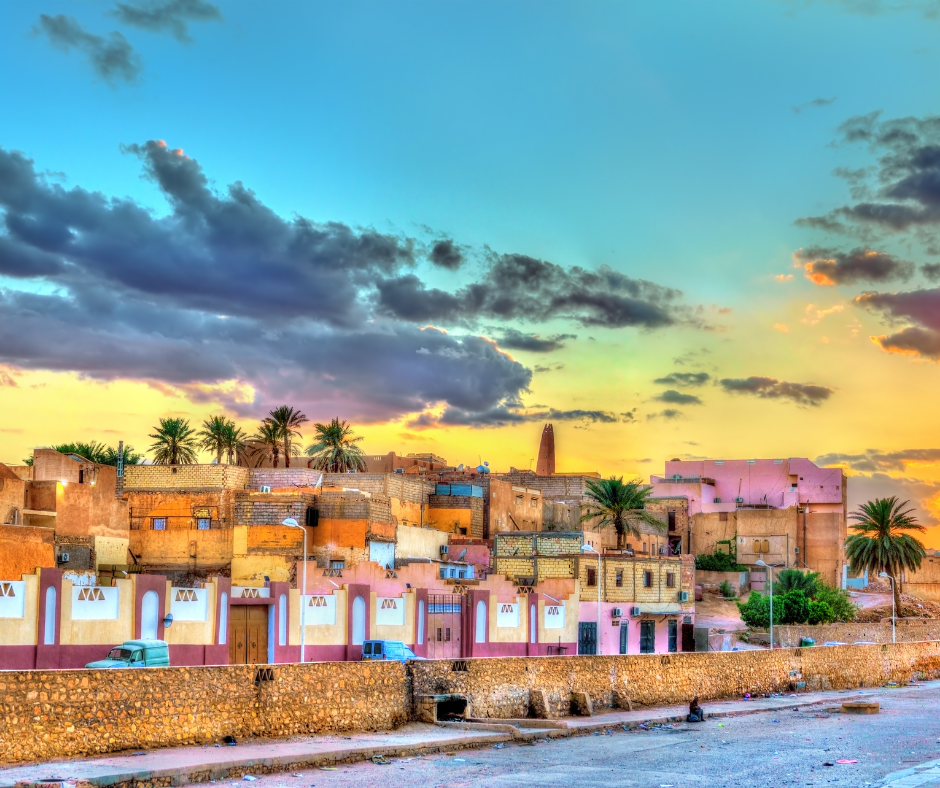
Ghardaia & it’s M’zab Architecture
The M’zab architecture of Ghardaia is a unique and remarkable example of urban planning and design. Located in the heart of the Sahara Desert in Algeria, Ghardaia is one of five M’zab cities, each of which has a distinct layout and design. The M’zab people, who are the indigenous inhabitants of the region, designed their cities to be highly functional, compact, and sustainable, with buildings arranged around a central mosque and market square. The architecture of Ghardaia is characterized by its striking white-washed buildings, narrow streets, and carefully designed public spaces. The buildings are constructed with mud-brick and limestone, which helps to regulate temperature and protect against the extreme heat of the desert. The city’s distinctive architecture has been recognized by UNESCO as a World Heritage site.
One of the most notable features of M’zab architecture in Ghardaia is the use of a unique building style known as the ksar. A ksar is a cluster of attached houses that are built around a central courtyard, which provides natural ventilation and light. The houses are connected by a series of narrow alleys and staircases, which help to create a sense of community and foster social interaction. The ksars in Ghardaia are highly functional, with each house serving a specific purpose, such as sleeping quarters, storage, or a communal kitchen. The design of the ksars is highly adaptable, allowing for expansion or contraction as needed. The M’zab people have maintained their unique architectural style for centuries, and the city of Ghardaia continues to be a living example of their remarkable urban planning and design.
Constantine
Constantine is a city located in the north-eastern region of Algeria. The city is situated on a plateau at an altitude of approximately 640 meters above sea level, overlooking the Rhumel River. It is a historically significant city and one of the largest urban centres in Algeria. The city is known for its picturesque location and its numerous historic sites and cultural attractions. One of the most significant landmarks in the city is the Constantine suspension bridge, which was built in the early 20th century and is considered an engineering marvel. The bridge spans the deep gorge of the Rhumel River and connects the two sides of the city.
Constantine has a rich cultural heritage and a long history that dates back to the Phoenician era. The city has been ruled by various empires and civilizations, including the Phoenicians, Romans, Vandals, and Arabs. The city’s strategic location made it an important center of trade and commerce, and it flourished under the rule of the Ottomans. Today, Constantine is a modern city that offers a unique blend of ancient and modern cultures. Visitors to the city can explore its many museums, ancient ruins, and traditional markets. The city is also famous for its vibrant music scene, which features a unique blend of Arab, African, and European influences.
Other things to see in Constantine include the old Kasbah which is the old historic walled city with maze like narrow streets and archways, the Palace of Ahmed Bey, Punic Wall and the Emir Abdelkader Mosque.
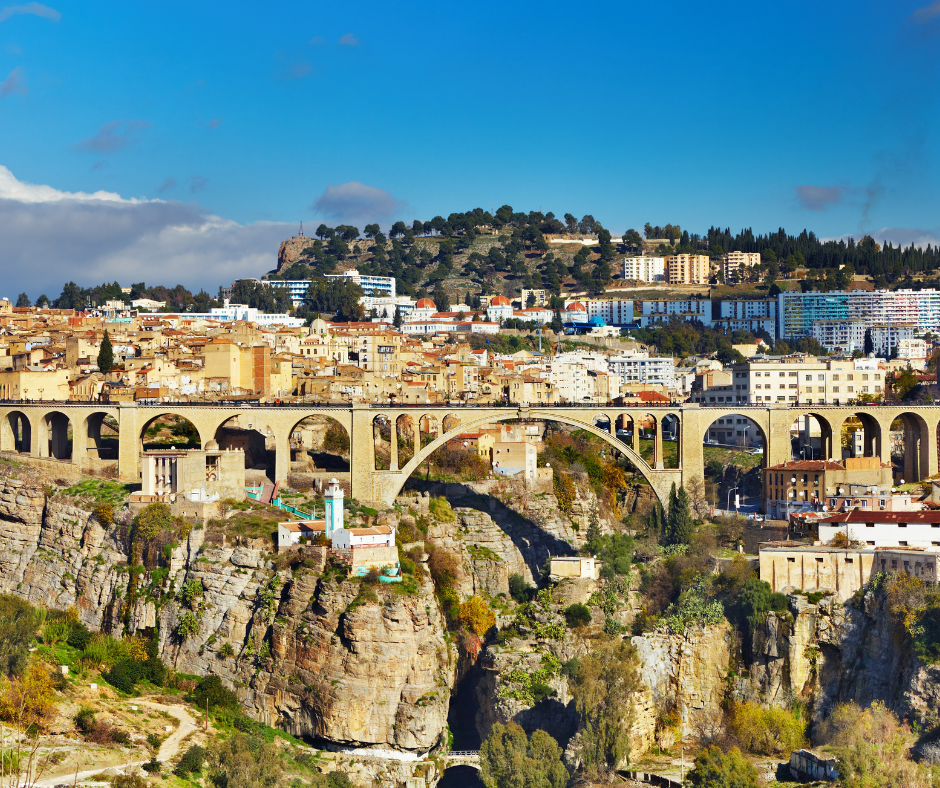
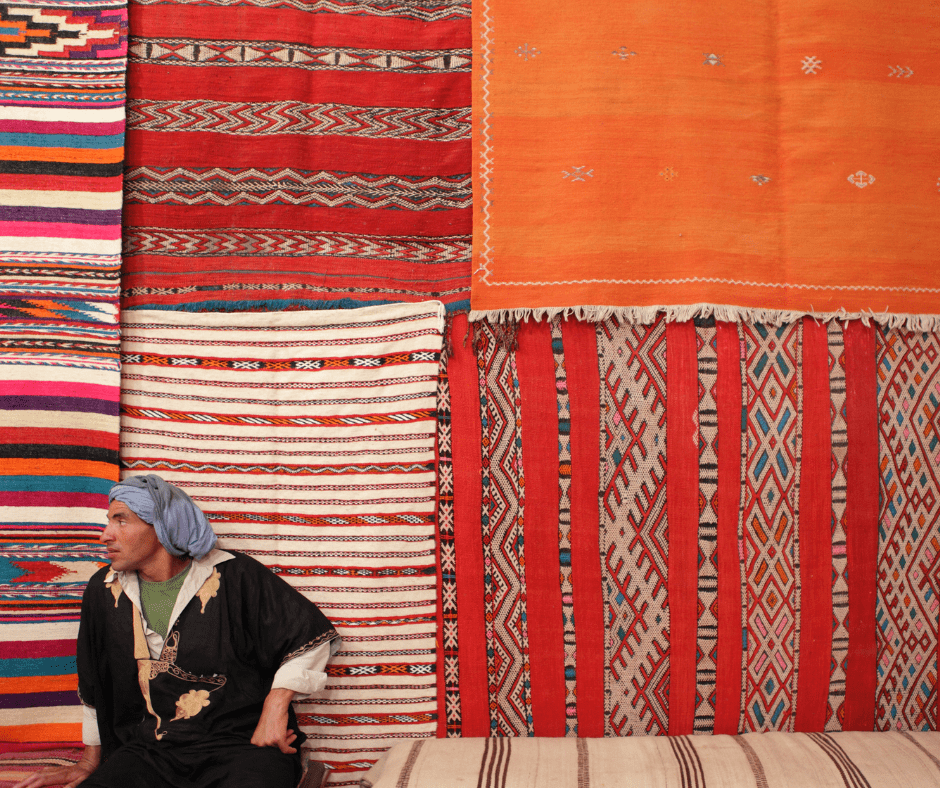
Berber Culture
Berber culture refers to the traditional customs, language, and way of life of the Berber people, who are indigenous to North Africa. Algeria is home to a significant Berber population, with estimates suggesting that up to a third of the country’s population identifies as Berber. The Berber people have a rich cultural heritage, with a unique history and distinct traditions that have been shaped by their environment and the influences of different civilizations over the centuries.
Berber culture in Algeria is characterized by a strong emphasis on community, family, and hospitality. The Berber people have a deep connection to the land and the environment, and their traditional way of life revolves around agriculture, animal husbandry, and artisanal crafts. The Berber language, known as Tamazight, is an integral part of their cultural identity, and efforts have been made in recent years to promote its use and preserve it for future generations. Berber music, dance, and art are also important components of their cultural heritage, with traditional instruments such as the lute, drum, and flute featuring prominently in their music. Overall, Berber culture in Algeria reflects a deep sense of pride and resilience, as well as a commitment to preserving their traditions and way of life in the face of modernization and globalization.
Ghoufi
Ghoufi is a small town located in the Batna Province in north-eastern Algeria. It is situated in the Aurès Mountains, and is known for its natural beauty, as well as its rich history and culture.
One of the main attractions in Ghoufi is its picturesque gorge or Balcons de Ghoufi, which is surrounded by cliffs and features a winding river. Visitors can hike along the river and enjoy the stunning views of the surrounding mountains and valleys. The town is also home to a number of historical landmarks, including the ruins of a Roman aqueduct, a mausoleum, and a number of traditional Berber structures.
The ruins of the Ghoufi balcony also include troglodyte and domestic dwellings. The homes are caved out of the sandstone and are four centuries old. The ruins preserve traditional Berber construction methods and were inhabited up until the 1970’s.
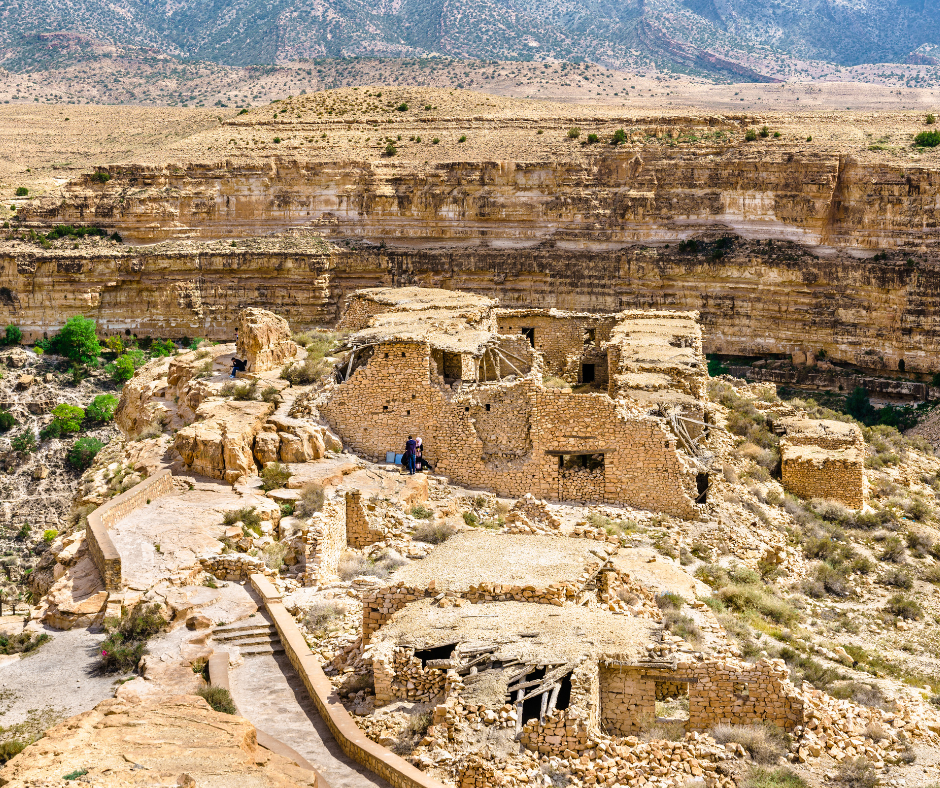
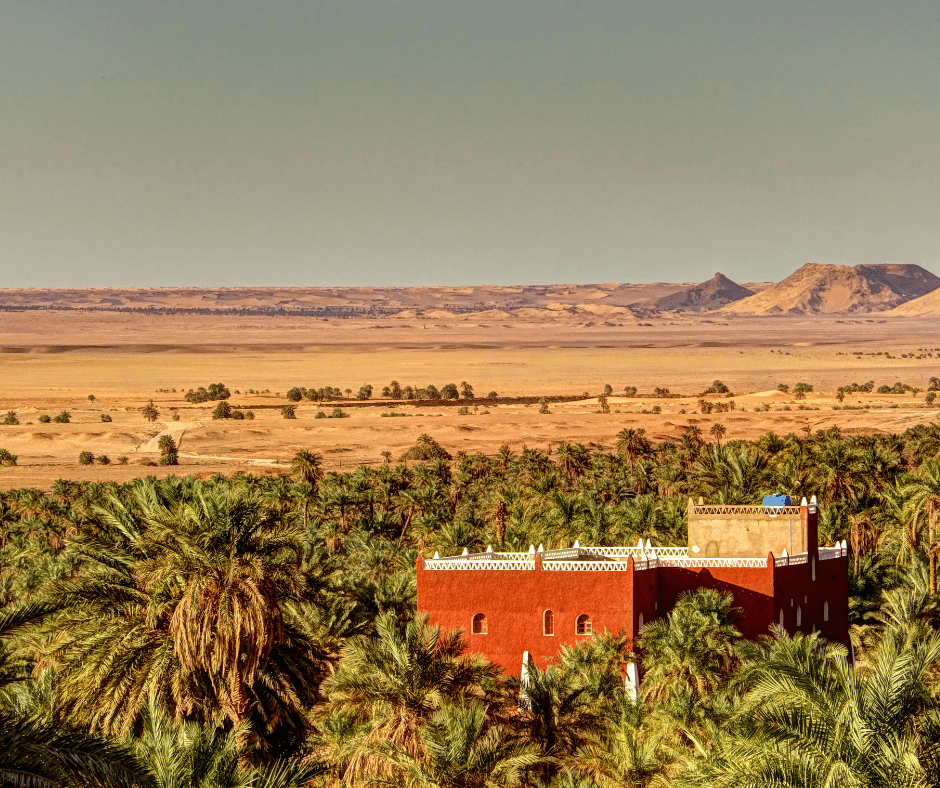
Timimoun
Timimoun is a town located in the Ghardaia Province of southern Algeria. It is situated in the heart of the Sahara Desert and is known for its unique architecture and stunning landscapes. The town is built around an oasis, which is a source of life in an otherwise harsh and barren environment. The houses in Timimoun are made of mud bricks and are decorated with intricate geometric patterns. The streets are narrow and winding, creating a labyrinth-like atmosphere that adds to the town’s charm. Visitors can explore the town’s many shops, markets, and cafes, which offer a glimpse into local life and culture.
The surrounding area of Timimoun is just as beautiful and unique as the town itself. The Sahara Desert is one of the largest and most diverse deserts in the world, and it is home to a wide range of flora and fauna. Visitors to the area can take a camel trek through the dunes or go on a 4×4 excursion to explore the more remote corners of the desert. Overall, Timimoun and its surrounding area offer a rich and immersive experience for those who are looking to explore the natural beauty and unique culture of the Sahara Desert.
Interested in Algeria? Why not check out our tour ‘Legionnaires of Roman Africa‘ which includes all these amazing places or give us a call on +61 2 7229 1926.

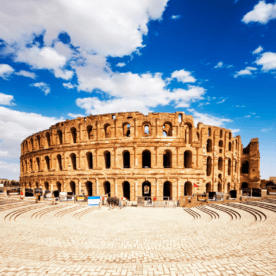

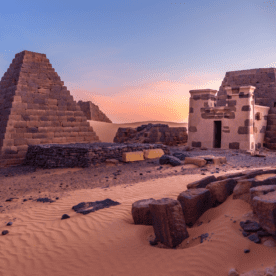
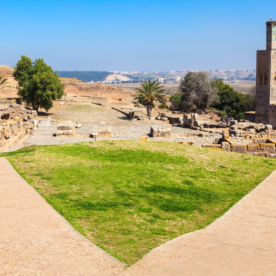
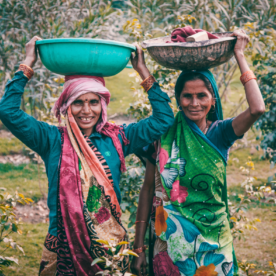
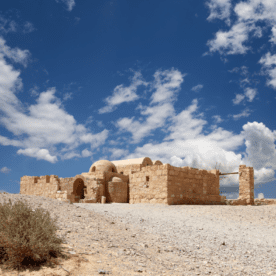
Leave a Reply